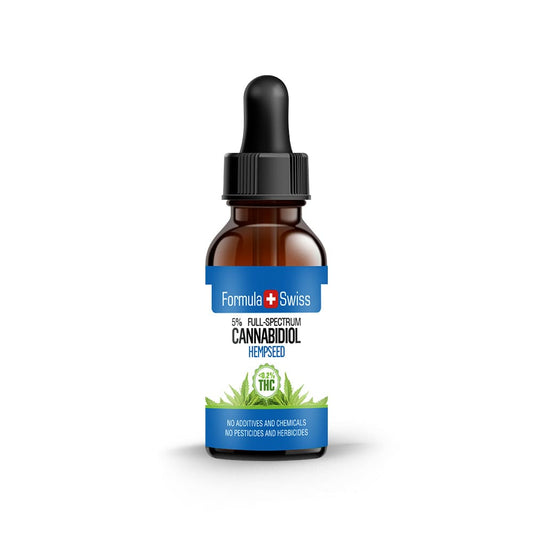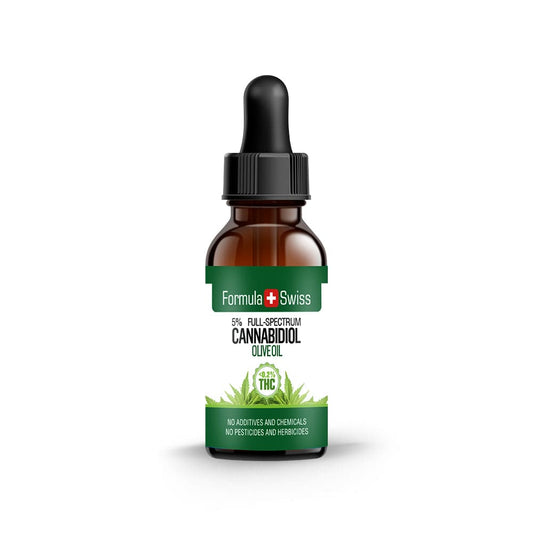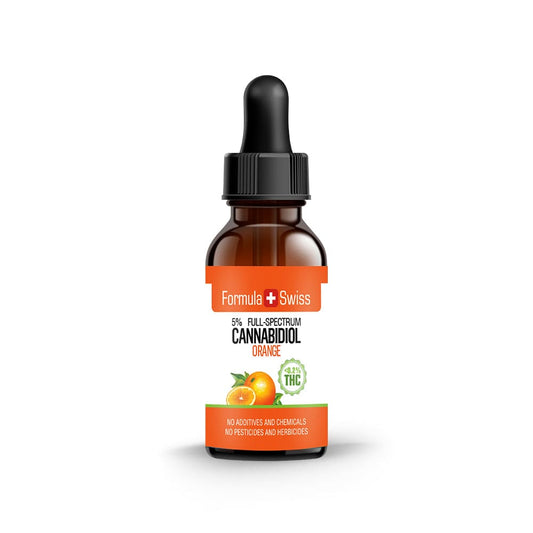Cannabielsoin, or CBE, is a compound that forms when CBD breaks down, either in the body or through certain lab processes. It doesn’t exist naturally in the cannabis plant, which is likely why most people haven’t heard of it and why research is still limited.
I came across CBE while working on cannabinoid breakdown and found its formation process unusual. It’s one of the few compounds that doesn’t come directly from the plant but appears later, after transformation. That alone makes it interesting from a technical point of view.
Having spent over a decade working with cannabinoid profiles and formulation, I’ve learnt that it’s often the lesser-known compounds that help us understand how cannabinoids really behave. In this article, I’ll explain how CBE forms, how it differs from CBD, and why it’s worth keeping an eye on—even if it’s not getting much attention right now.
Prefer watching over reading? This video covers the key points from the article:
Save up to 30% when you order your CBD oil today
Key takeaways
- Cannabielsoin, or CBE, is an organic compound that remains largely under-explored within cannabinoid research.
- As a cannabinoid, CBE stems from the metabolic transformation of CBD and does not exhibit psychoactive properties.
- Distinct from its precursor CBD, CBE is not found naturally in cannabis and arises after metabolic processes.
- The existing research on CBE is limited and primarily focused on its structural characteristics and biological interactions.
- A more complete understanding of CBE's properties requires further scientific investigation.
This article is provided for informational purposes only and does not relate to any of the products available in our webshop. For more information, please see our full disclaimer.
Introduction to CBE (Cannabielsoin)
Cannabielsoin (CBE) is a lesser-known compound among the many identified in cannabis. Unlike more familiar cannabinoids such as THC and CBD, CBE does not occur naturally in the plant. According to a study published in the journal Pharmacology, Biochemistry and Behaviour, it is formed through metabolic processes that modify the structure of CBD.
This transformation, which takes place under specific biological conditions, involves the addition of an oxygen atom to the CBD molecule. The result is CBE—a structurally distinct compound that may exhibit different characteristics from other cannabinoids, although the details remain under investigation.
Cannabielsoin (CBE) was first identified in 1973 by Raphael Mechoulam and his research team. Mechoulam, a leading figure in cannabinoid research, conducted extensive work on the chemical transformation of cannabinoids.

Since its discovery, CBE has remained largely outside the scope of mainstream cannabinoid research. Its infrequent occurrence and the specific pathways involved in its formation have contributed to limited visibility in both scientific and general contexts.
Understanding how cannabinoids change under different conditions offers insights into their chemical behaviour and potential relevance in future research. The formation of CBE from CBD illustrates one of the many transformations cannabinoids can undergo, reflecting the complexity of their chemistry.
While available data on CBE remains limited, the compound continues to be of interest in the context of ongoing cannabinoid studies. As more findings are published, further details may clarify its characteristics and applications within scientific fields.
Understanding cannabinoids
Most conversations about cannabis focus on CBD and THC, but the plant contains more than 150 identified cannabinoids, according to a study published in Scientific Reports. Each one has its own structure and behaviour.
Many, like cannabielsoin (CBE), do not produce the same psychoactive effects as THC. As research continues, these lesser-known compounds are starting to receive more attention for their potential roles and applications.

Other cannabinoids worth knowing
From what I’ve seen over the years, CBD and THC are just part of the picture. The cannabis plant produces over 150 cannabinoids, each with its own structure and behaviour. Most of them haven’t been studied much, but that doesn’t mean they aren’t important.
Many of these lesser-known compounds, like CBE, could help us better understand how the plant really works. As research catches up, the broader potential of these cannabinoids is starting to become clearer.
The chemistry of CBE
Cannabielsoin (CBE) is an example of how cannabinoids can change when exposed to certain conditions. It forms through the oxidation of cannabidiol (CBD), a process that takes place during metabolism or under controlled laboratory conditions.

This transformation involves adding an oxygen atom to the CBD molecule. That small change alters the structure of the compound, setting CBE apart from both CBD and other known cannabinoids.
Looking at how cannabinoids are formed shows the complexity involved in their chemical development. In CBE’s case, the added oxygen affects both its shape and how it reacts—details that researchers continue to examine.
The biological mechanisms of CBE
Cannabielsoin (CBE) appears to affect the body differently than more familiar cannabinoids like THC or CBD. From what researchers have seen so far, it likely interacts with both CB1 and CB2 receptors—but not in the same way or with the same strength.
This may be why CBE doesn’t produce any intoxicating effects. Its interaction is thought to be much weaker than THC’s, especially at the CB1 receptor, which is tied to the typical “high.”
The table below gives a basic comparison of how CBE binds to these receptors compared to other cannabinoids and helps put its behaviour into perspective.
| Cannabinoid | CB1 receptor affinity | CB2 receptor affinity | Observed characteristics |
|---|---|---|---|
| CBE | Low | Moderate | Non-intoxicating, under investigation for unique interactions |
| THC | High | Low | Psychoactive effects, a key area of interest in scientific and industry discussions |
| CBD | Very low | High | Widely studied about multiple pathways |
This comparison highlights why CBE stands out in ongoing cannabinoid research. Its receptor activity and structural uniqueness continue to be examined as part of the broader study of cannabis-derived compounds.
Order and get up to 30% off your CBD oil
Characteristics of cannabielsoin (CBE)
CBE is a non-intoxicating compound, which means it doesn’t produce the psychoactive effects associated with THC. This difference has drawn interest in research focused on cannabinoids that interact with the body without altering perception or behaviour.
As attention continues to shift beyond the dominant compounds, CBE has emerged as one of several cannabinoids that might help expand our understanding of the plant’s broader chemical profile.
Although still early in research, CBE shows signs of interacting with cannabinoid receptors in ways that differ from both THC and CBD. While THC binds strongly to CB1 receptors—leading to its psychoactive effects—CBE appears to have a much lower affinity.
CBD, too, engages these receptors differently, but has been studied far more extensively. CBE’s distinct structure may influence how it behaves in the body, which is part of what makes it a compound worth exploring further.
| Cannabinoid | Psychoactive effects | Research focus |
|---|---|---|
| CBE | None | Receptor interactions, metabolic pathways |
| CBD | None | Neurological and inflammatory pathways |
| THC | High | CB1 binding, psychoactive response |
Continued investigation into CBE may contribute to a broader understanding of cannabinoid diversity. As additional findings become available, they may clarify how these lesser-known compounds function in various research settings.
Which cannabinoids produce a psychoactive effect?
Current research on CBE
Looking into cannabielsoin (CBE) research reveals that it remains in the early stages of scientific exploration. Most cannabinoid studies have concentrated on CBD and THC, leaving CBE comparatively under-examined. As a result, available insights into its properties are limited.

The existing body of work on CBE consists largely of small-scale studies, many of which have not been widely replicated. This restricts the depth of current understanding and highlights the need for further investigation.
Limitations of current studies
Research on CBE has been limited in scope and scale. The small sample sizes and lack of extended trials contribute to an incomplete picture of its behaviour. Additionally, limited funding in this area continues to present challenges for advancing more comprehensive studies.
Future directions for CBE research
Interest in CBE is increasing as researchers look more closely at cannabinoids beyond the usual focus. Its unique structure and the way it forms from CBD have raised questions about how it compares with other compounds in this group.
Areas for future study could include how CBE interacts with different biological systems, how its receptor activity lines up with other cannabinoids, and what its long-term stability and behaviour look like. More detailed research may help clarify CBE’s role in ongoing cannabinoid investigations.
Order CBD oil now and save as much as 30%
CBE in the market
Looking into cannabielsoin products shows a growing but still small part of the cannabinoid market. Producing CBE from CBD is complex, which makes it relatively rare. However, this limited availability could lead to increased interest in the market.

Currently, there are a few specialised products, such as isolates, oils, and capsules that include CBE. These can be found through select online platforms or in stores offering unique cannabinoid-related items.
The table below details the types of CBE products currently available and their typical applications:
| Product type | Description | Typical application |
|---|---|---|
| Isolates | Pure form of CBE, often found as a crystalline powder | Research, formulation of specific cannabinoid-based items |
| Oils | CBE included in a carrier oil | Cosmetic or topical products |
| Capsules | Pre-measured units containing CBE | Use in controlled contexts where precise quantity is preferred |
As awareness of CBE's unique properties increases, a broader selection of related items is expected to become available. This will likely develop alongside advancements in research and production methods.
How does CBE differ from CBD?
The study of cannabinoids reveals a key difference between CBE and CBD. This difference, though small, affects their characteristics and potential uses. Both are derived from the cannabis plant but interact with systems in distinct ways.
The main difference is that CBE has an extra oxygen atom. This alters how CBE behaves chemically when compared to CBD. The structural variation offers a point of interest for scientific research.
| Compound | Molecular formula | Oxygen atoms |
|---|---|---|
| CBD | C21H30O2 | 2 |
| CBE | C21H30O3 | 3 |
This additional oxygen atom plays a role in differentiating the two compounds. It may influence how CBE is processed and could contribute to its non-psychoactive profile.
The molecular difference between CBD and CBE is clearly defined. This variation might influence their technical applications in various areas, including how they are metabolised.
Investigating the structures of CBD and CBE helps to broaden scientific understanding of cannabinoid compounds. This ongoing research contributes to the expanding field of cannabinoid science.
The production process of CBE
Converting CBD into cannabielsoin (CBE) is a complex process involving multiple steps. Each stage must be carefully controlled to produce a consistent compound suitable for study or formulation.

Making cannabielsoin (CBE) is a precise process. It requires constant attention to detail, showing the main challenges in its creation. The journey begins with CBD conversion, needing strict control to transform it correctly.
CBE is not found naturally in cannabis. It is mainly made in the liver through CBD conversion. This process involves chemical reactions that mimic natural metabolic processes. To understand the complexity, let's compare CBD and CBE:
| Cannabinoid | Origin | Method of production | Molecular formula |
|---|---|---|---|
| CBD | Naturally occurring in cannabis plants | Extraction from cannabis plant | C21H30O2 |
| CBE | Mechanical conversion from CBD | Enzymatic conversion in liver simulation | C21H30O3 |
Knowing how CBD turns into CBE is key for those in the cannabinoid industry. It helps tackle the big challenges in making CBE, affecting its quality and quantity.
Looking to the future of CBE
Looking ahead, cannabielsoin (CBE) is attracting growing interest in scientific and research communities. Its unique structure sets it apart from other cannabinoids, making it a subject of further study.
As interest in plant-based compounds continues, CBE’s emergence aligns with a broader shift toward natural materials. Its presence contributes to the expanding catalogue of cannabinoids being explored for various applications.
The full range of CBE’s characteristics remains under investigation. However, early observations from researchers and industry professionals highlight increasing curiosity about its potential relevance.

CBE may play a role in future product development where cannabinoid formulations are involved. Its non-psychoactive profile and structural features make it an interesting area for continued examination.
As research progresses, CBE is likely to feature more prominently in discussions about cannabinoid-based materials. While outcomes remain to be seen, the increased attention signals its growing relevance in the field.
Personal perspective
I’ve worked with cannabinoids long enough to know that some of the most interesting ones are the least talked about. Cannabielsoin, or CBE, is a good example. It doesn’t come directly from the cannabis plant like CBD or THC, it forms after CBD breaks down. That alone made me curious.
What caught my attention wasn’t hype or marketing, it was how CBE shows up, and what that says about how cannabinoids behave under different conditions. I’ve spent years looking at these kinds of details, and I’ve found that the smaller, lesser-known compounds often help us understand the bigger picture.
This article is my way of highlighting what we know about CBE right now — and why I think it’s worth paying attention to as research continues.
Don’t miss out—save up to 30% when you purchase CBD oil today
Frequently asked questions
What exactly is CBE (Cannabielsoin)?
Cannabielsoin (CBE) is a byproduct of cannabidiol (CBD) that forms through metabolic processes in the liver or via laboratory methods. It is not found naturally in the cannabis plant. CBE does not produce intoxicating effects and interacts differently with cannabinoid-related receptors compared to THC.
Can you elaborate on the extensive world of cannabinoids beyond CBD and THC?
There are over 150 known cannabinoids in the cannabis plant. Each has its own chemical structure and potential characteristics. Many of these do not produce intoxicating effects and are under scientific study for their properties.
Are there common misconceptions about cannabinoids that need to be addressed?
Yes, a common misconception is that all cannabinoids have intoxicating effects. In reality, several do not. CBE is an example of a cannabinoid that does not produce such effects.
How is CBE formed from CBD?
CBE can result from the breakdown of CBD through enzymatic action in the liver or be produced using specific laboratory techniques.
What are the molecular differences between CBE and CBD?
CBE contains one additional oxygen atom compared to CBD. This difference in molecular structure may influence how the compound behaves in various environments.
How does CBE interact with the endocannabinoid system?
CBE interacts with the endocannabinoid system, including the CB1 receptor, though it does so differently than THC. Research is ongoing to better understand these interactions.
Are the receptor binding differences between CBE and other cannabinoids significant?
Differences in how CBE binds to receptors may be important. These variations are of interest in cannabinoid research, especially in terms of non-intoxicating activity.
What are the non-psychoactive properties of CBE?
CBE is considered non-psychoactive, meaning it does not produce a high. Research is still at an early stage regarding its other characteristics.
How do the effects of CBE compare with those of CBD and THC?
CBE does not produce the intoxicating effects associated with THC. While its structure is similar to CBD, its behaviour may differ. Comparative studies are ongoing.
What are the limitations of current studies on CBE?
There is limited data available on CBE. Most cannabinoid studies have focused on CBD and THC, and more targeted research is needed to clarify CBE's properties.
What direction is future research on CBE heading?
Future studies are expected to examine the characteristics, applications, and safety profile of CBE. These efforts may help clarify its potential relevance in cannabinoid science.






